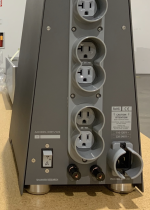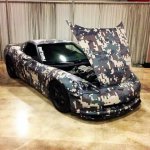We just built a new home with special attention to AC delivery including a dedicated Sub panel 6' from the system terminating into high end outlets which measure only 50 mv of line noise. Believing we had a good Power Conditioner and low line noise measurements if anybody asked me if line noise had any significant impact on my listening experience I would have said no. That changed Saturday when my local dealer asked me to home demo a 6000S V2. I was wrong, AC prior to the installation of the 6000s V2 was having major negative influence on what I was hearing. Over my thirty years in the hobby I have had many power conditioners in my system or at home for demo. Some helped a little, some hurt. Most were of very good reputation including a few variations of the Shunyata Hydra. Some were only to be used in parallel but none sounded better with my amps plugged into them until now. Up to this point I had mostly considered Power Conditioners as a "feel good " power strip offering no significant sonic value. The Demo unit is silver and I need a black to match the system. The dealer needs his demo back but I don't want to be one day without it while I wait for the black one. I may very well buy the demo so I don't have to be without it and when the black one comes in put the silver one in my second system. Until I tried the 6000Sv2 at home there was only half a chance I was going to buy a new power conditioner. It may now be two. As far a describing the listening experience? I will just say that even if you don't think line noise is an issue you won't really know until its gone. Try one
Very consistent with my experience. I've been using Shunyata power distributors for about a decade now, and while they've all been excellent, the Denali 6000/S V2 represents a real technological breakthrough because its the first one I know of that can provide > 64dB of noise reduction while not impacting the most important requirement for any power distributor, dynamic transient current delivery. When the rectifiers in component's power supply snap open during a dynamic or transient passage in the music, they pull hard on the AC line for current, and the inductance of the line resists the much-needed in-rush of current. This is where the technological advances of the Denali 6000/S V2 represents a real breakthrough, because it allows for this current to be delivered while simultaneously providing significant noise reduction. And, these two functions generally do not go hand-in-hand, and in the power distributors from other companies, they generally conflict with one another. I.e., make one response, e.g., noise reduction, better, and the other, e.g. current delivery, gets worse.
Its also important to use NR power cords on components in conjunction with power distributors, because the NR filters on these power cords prevents noise from the component's internal power supply from going
back out from the component, to "dirty up" the current internal in the power distributor. Think of the current in the PD as a swimming pool with fresh, clean water, and the noise from the components internal power supply as "muddy water". Using an NR power cord prevents the muddy water from the component's power supply from "muddying up" the fresh, clean water that the rest of the components are sharing.
Moreover, installing a dedicated AC line is virtually no guarantee of "clean" power; the mains wiring is an excellent antenna for high-bandwidth noise, and with the right analyzer, you can hear AM and/or FM radio as a significant noise component on dedicated AC lines.
Check out this video as an example:
https://youtu.be/g2SAj7aKXGo

